This foraged Backwoods Chokecherry Jelly recipe is easy to prepare and has the perfect balance of tartness and sweetness. If you leave it chunky, you can make Chokecherry Jam instead! And, if you have more chokecherries, try my Chokecherry Syrup & Chokecherry Fruit Roll Ups!
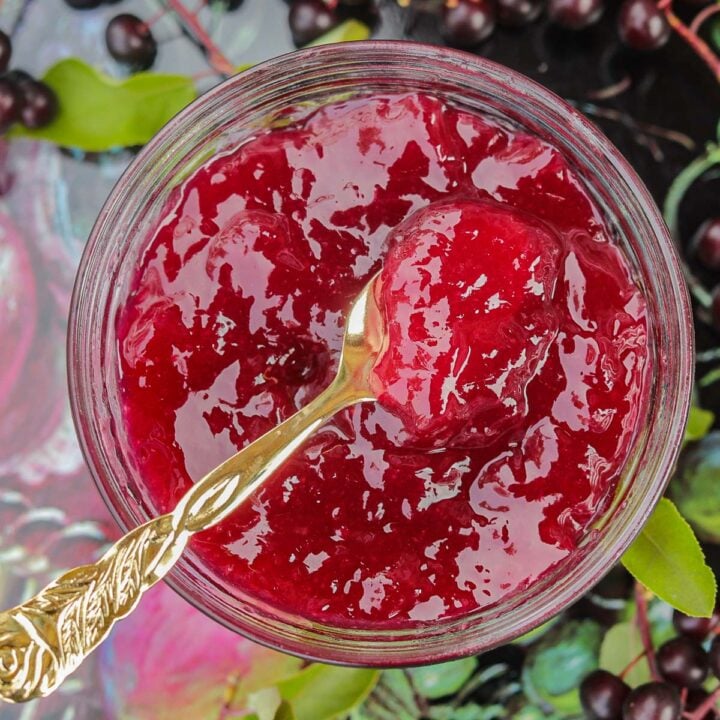
Chokecherries are currently in season. However, chokecherries are not the same thing as cherries. You won't find chokecherries at your local grocery store, so don't go looking for them there!
I've been known to pick them along windy backwoods Montana roads, with friends driving by and honking and strangers stopping to ask what I was picking and why. Yup, no shame at all, you have to get these tasty berries where you can find them!
If picked too early, the fruit has a very astringent taste that will make you "choke" or at least pucker. The berries go from green to red, to black, which is when you know that they're fair game.

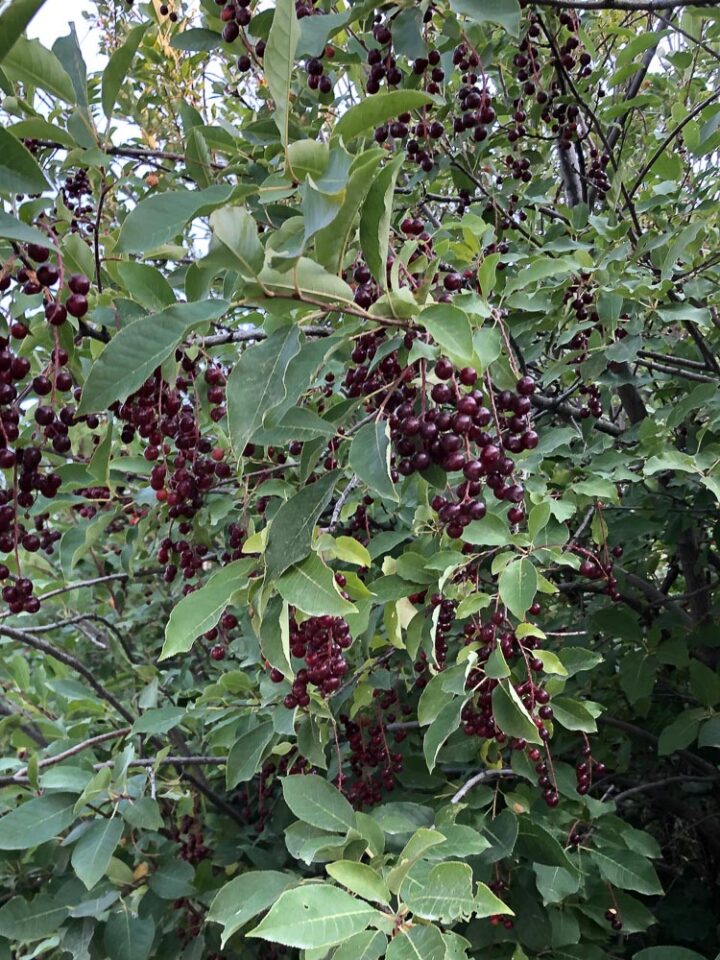
I have heard it said that you should not pick chokecherries until after the first frost. However, when you're competing with other people, birds, goats, and BEARS, sometimes you gotta get'em while you can!
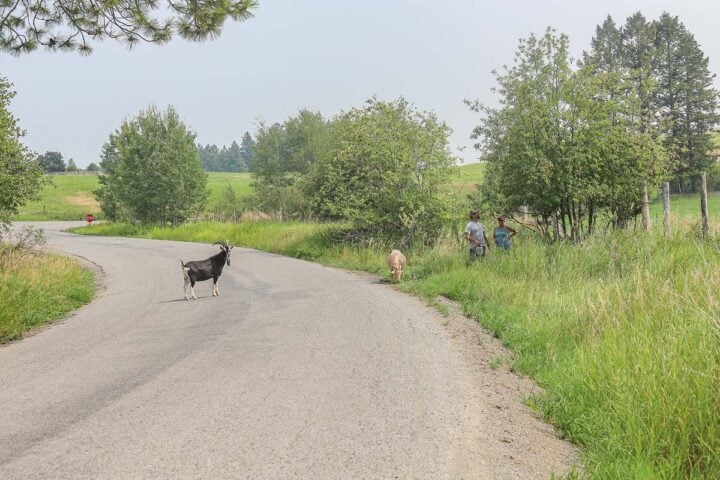

Jump to:
🧐 Why This Recipe Works
This is a tried and tested recipe. I didn't only make this once, but four times just to get the texture and taste perfect.
The precise measurements and the use of pectin will ensure that the chokecherry jelly will set every time you prepare it. Not only will you love it, but so will the recipients of your delicious gift. You are going to share, aren't you?
🛒 What You Need to Make This Recipe
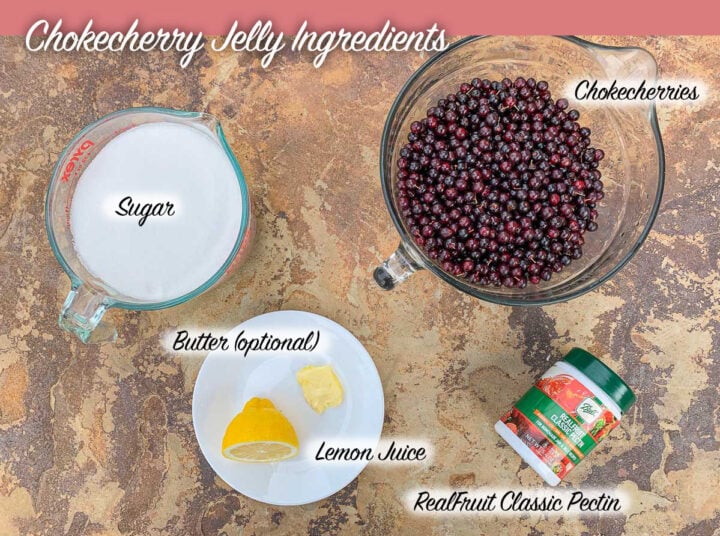
🔖 Recipe Ingredient Notes and Substitutions
- Chokecherries — As mentioned earlier, this wild fruit needs to be foraged and is usually ripe in August (at least in Montana). Choose the berries that are dark in color or almost black.
- Pectin — I've tried a few different types of pectin for this recipe, including liquid pectin. The one that gave me the best results was RealFruit Classic Pectin.
- Lemon Juice — I like to add a little lemon juice for the acidity. I recommend using fresh lemon juice when possible, but you can substitute bottled if you need to.
- Butter — A teaspoon of butter can cut down on the amount of foam that is produced as the chokecherry jelly boils. If you don't add the butter, you may need to skim the foam off the jelly before you can it.
- Vanilla Extract — In the past, I have used vanilla extract in my chokecherry recipes. This is mainly because I'm not a big fan of almond extract, which seems to be recommended in many recipes. Feel free to add vanilla extract, almond extract, or leave them out, like I did.
🫙 Helpful Tools
🍒 How to Make Chokecherry Jelly
Step 1: Wash jars, then place jars in a water bath canner. Boil for 10 minutes. Keep the jars in the hot water until needed. The lids and bands can be added a few minutes before you need them.

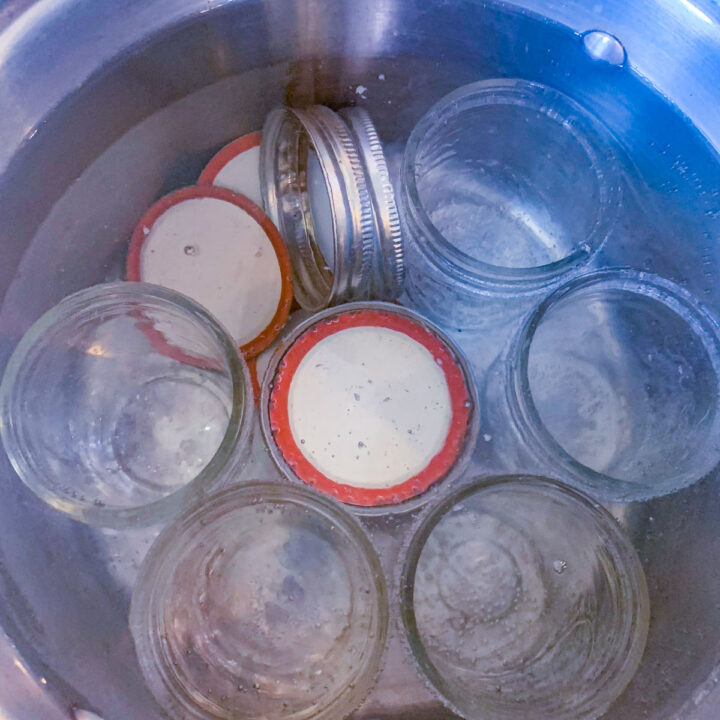
Step 2: Add cleaned chokecherries to a large saucepan. Cover with six cups of water. Bring to a boil over medium-high heat, then simmer, uncovered, over low heat, for 30 minutes. Smash the fruit to release the juice and strain the liquid through a fine strainer, jelly bag, or a few layers of cheesecloth. You should have approximately 3½ cups of chokecherry juice. If not, add enough water to equal 3½ cups.
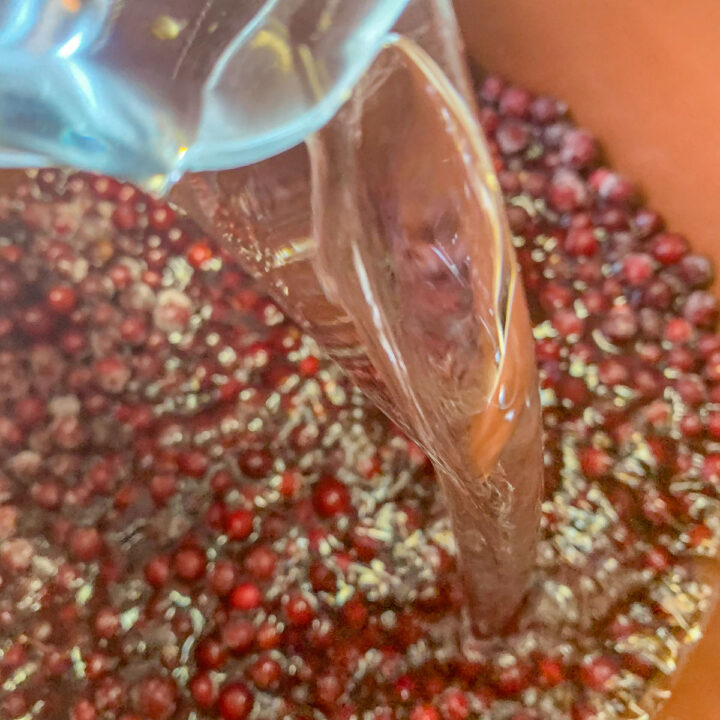
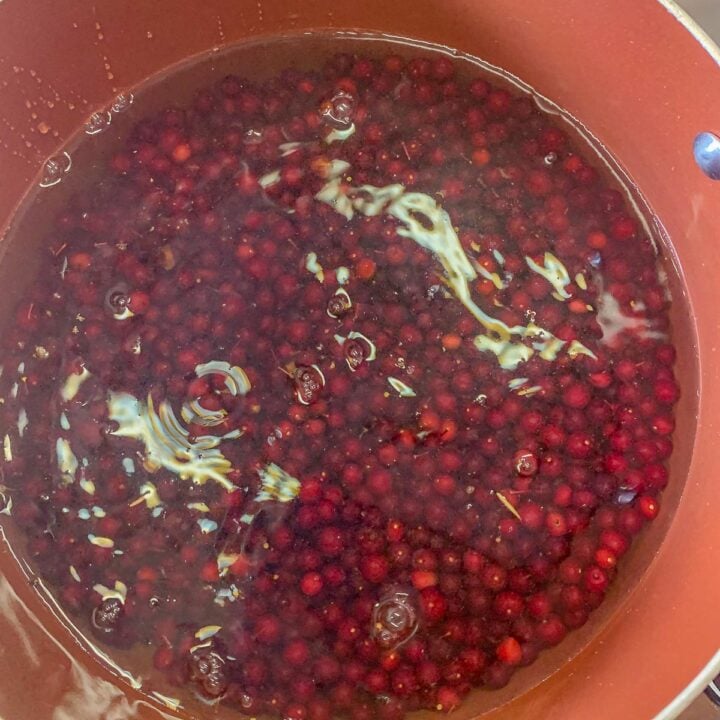
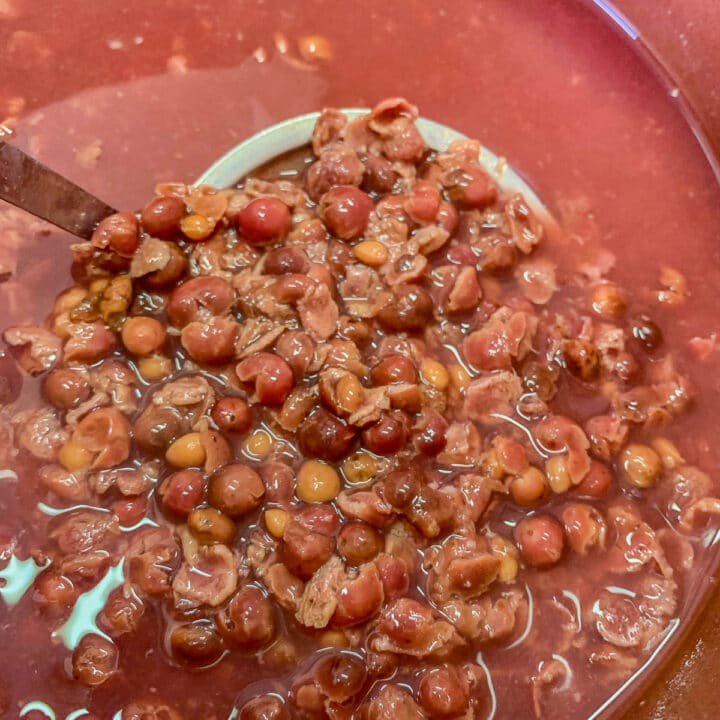

Pro Tip: To make chokecherry jam, add some of the pulp to the juice so that you end up with a more jam-like texture.
Step 3: Clean the saucepan and return it to the stove. Pour strained juice back into the pot. Turn the heat to medium. Whisk in RealFruit Classic Pectin until dissolved. Add lemon juice, and butter, if using. Bring the mixture to a full rolling boil, over high heat, whisking constantly.

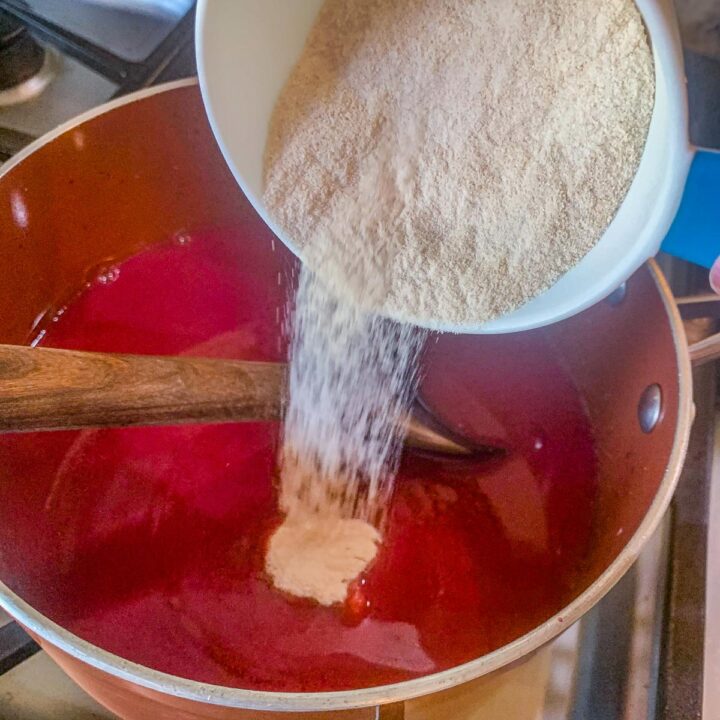
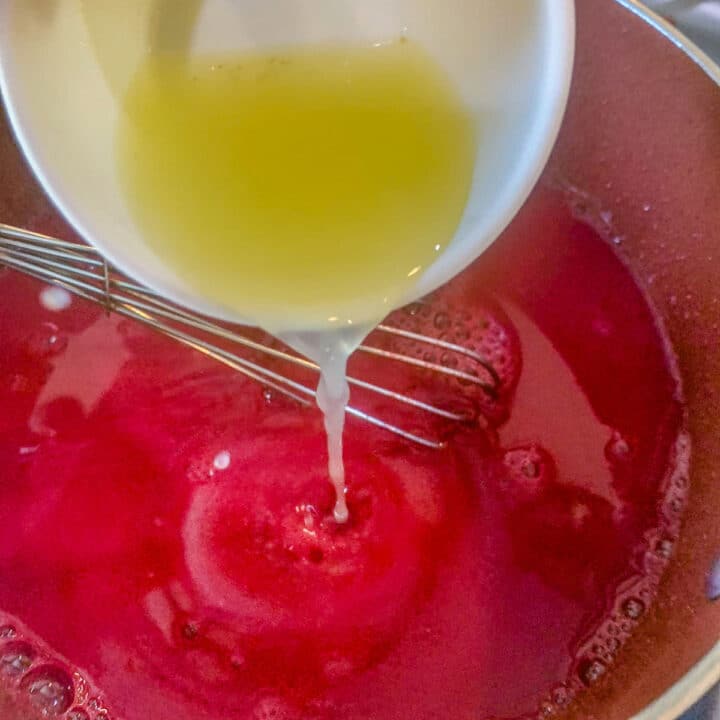
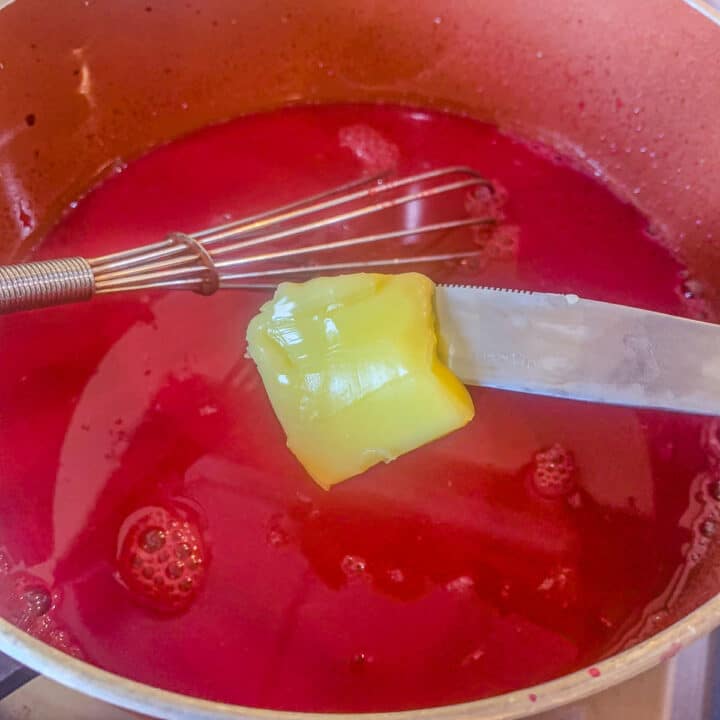
Step 4: Next, add 4 cups of sugar, while you whisk quickly to dissolve it. Return the mixture to a full rolling boil and boil hard for one additional minute, as you continue to stir the mixture. Remove from heat and skim off the foam, if necessary.
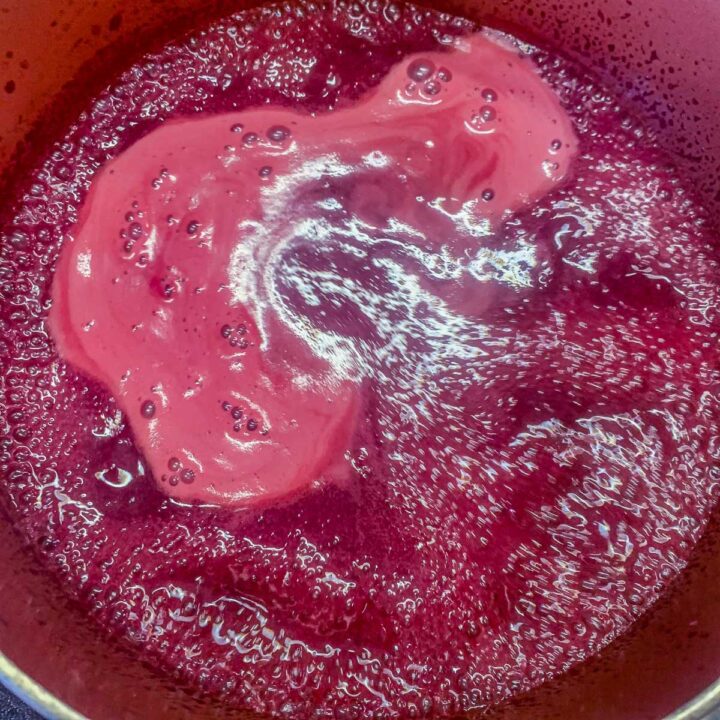
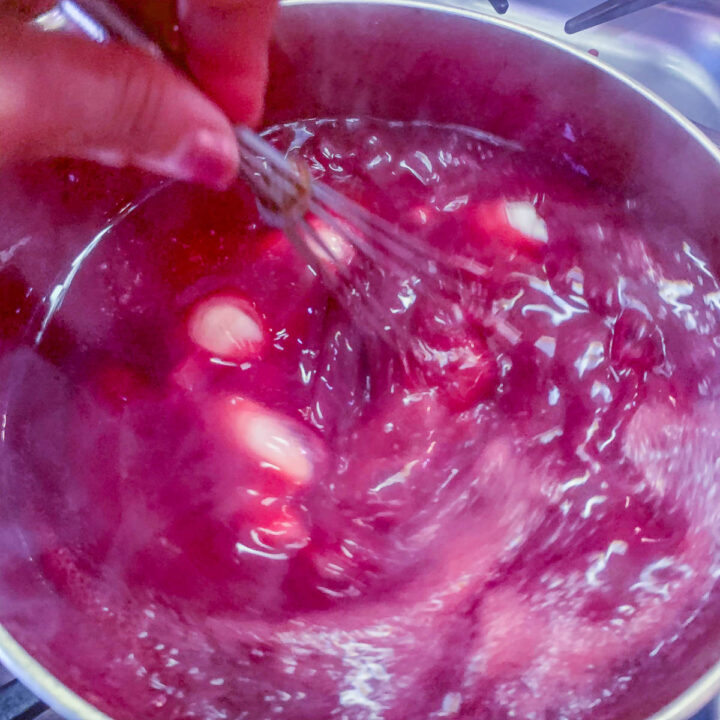
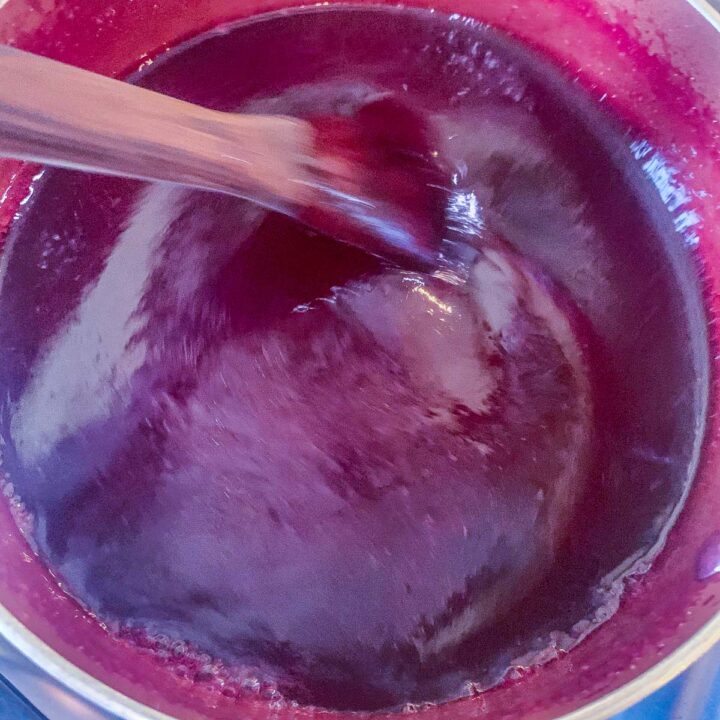
Step 5: Ladle into sterilized jars, leaving ½ inch headspace. Wipe the glass jar rims with a damp kitchen towel, secure lids, and screw bands hand-tight.
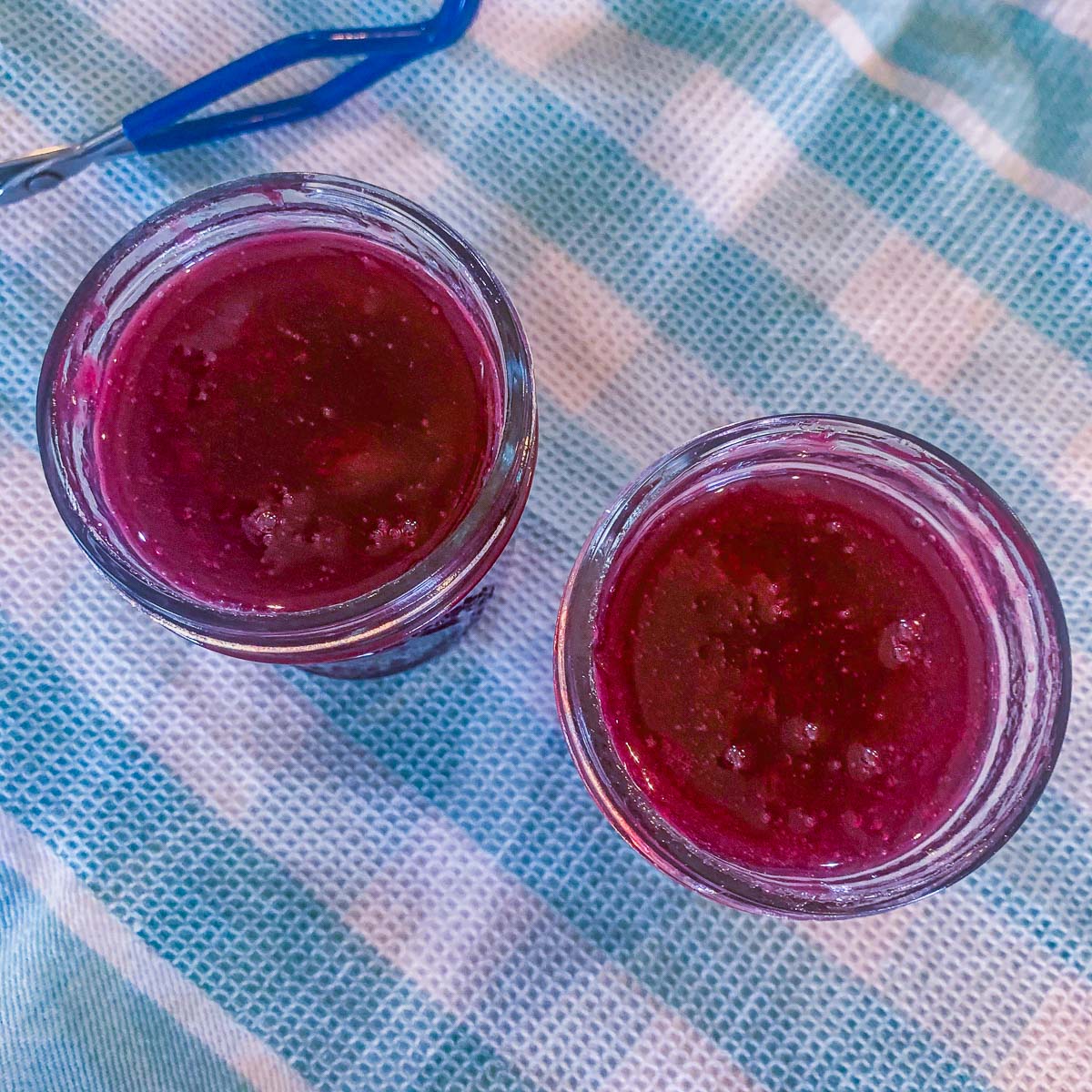
Water Bath Canning
Add jars to the canner filled with water and make sure the water level is at least a few inches over the jars. Process the filled jars in boiling water, for a minimum of 10 minutes, adding 5 additional minutes for every 1000'-3000' above sea level.
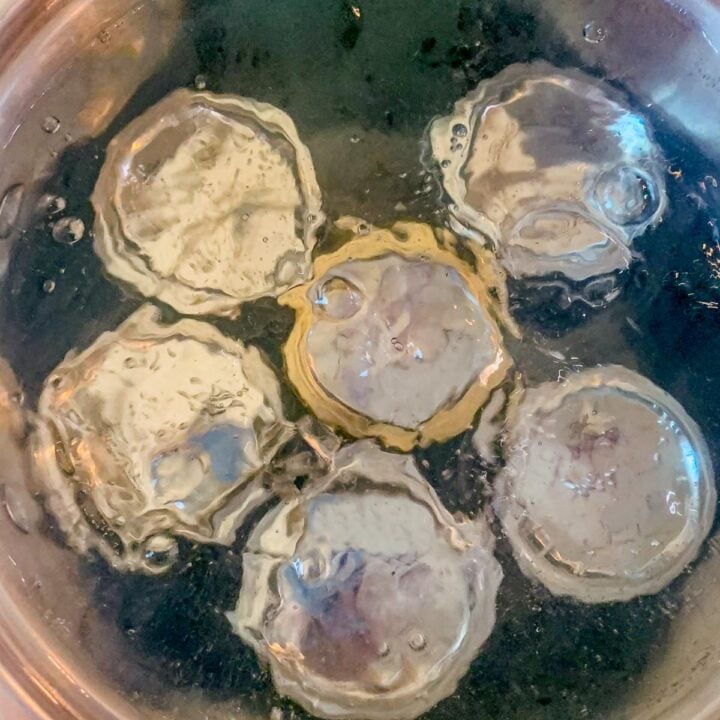
Pro Tip: Remove jars from the canner and place on the counter to seal. Make sure that the jars have sealed properly, then store in the pantry for up to a year. If a jar has not been sealed you can either process it again or store it in the refrigerator to be consumed first.

🤷🏻♀️ Recipe FAQs
Chokecherries should be picked in late summer. According to nrcs.usda.gov, they are found in all but eight states here in the U.S.
In Montana, chokecherries begin ripening in August. It is generally recommended to wait until after the first frost, which is said to make the fruit sweeter and less astringent.
Chokecherries might not be the best-tasting fruit when picked off the plant, but there are many ways that the fruit can be enjoyed. Here are a few examples.
• Chokecherry Jam, Syrup, or Sauce
• Chokecherry Liqueur, Mead, or Chokecherry Wine
• Chokecherry Pie
After washing the chokecherries, add them to a large pot and cover them with an equal amount of water. Simmer the chokecherries for 30 minutes or longer. Once the fruit begins to burst, smash the berries using a potato masher. Keep in mind that if you simmer the fruit longer, more of the juice will evaporate, yielding less juice.
Strain the liquid through a sieve or jelly strainer. If you prefer a clearer liquid, don't press down on the chokecherries in an attempt to get more juice out of the berries. This can cause your juice to be cloudy.
Another great way to juice chokecherries is with a steam juicer.
The fleshy part of the choke cherry fruit is edible, while the seeds, twigs, and leaves of the plant are considered poisonous. But then again, why would you want to eat the twigs, leaves, and seeds?
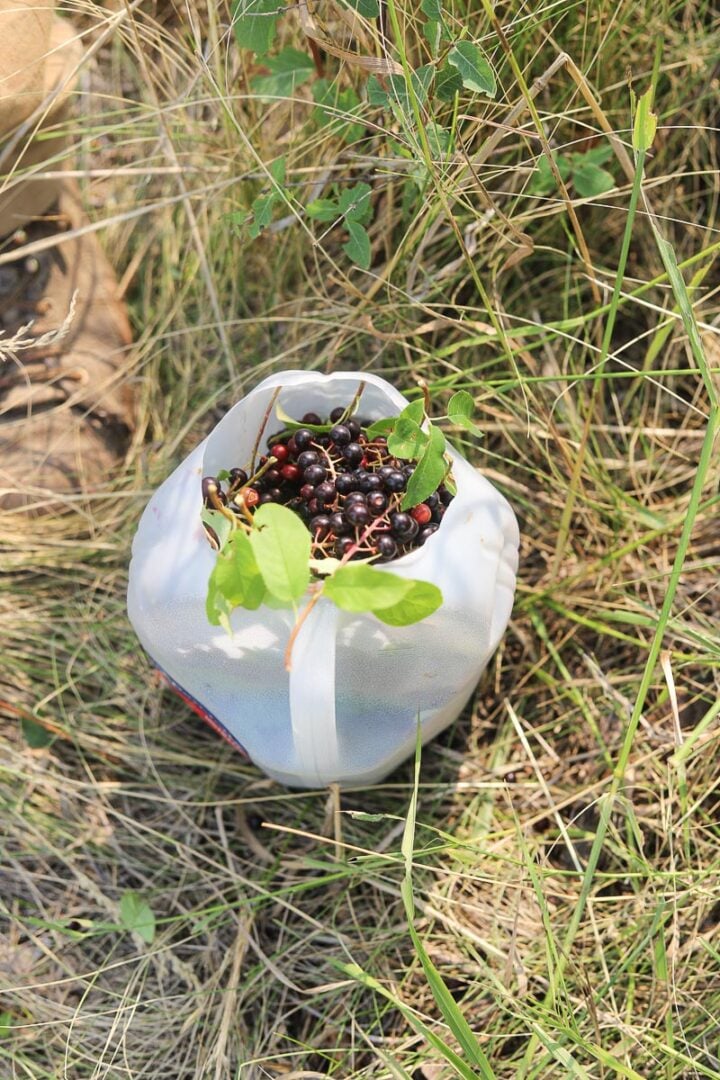
👩🏼🍳 Pro Tips
- It is generally recommended to let the juice drip into a bowl, undisturbed, for a few hours instead of squeezing or pressing on the fruit. This may cause the chokecherry jam or jelly to be cloudy. This is totally up to you and how much patience you have!
- Unripe chokecherries are red and are higher in natural pectin. This means they may help your jam jell better. Having a small percentage of unripe chokecherries as part of your recipe may not be a horrible idea.
- Chokecherries can be frozen until you are ready to use them. After washing the chokecherries and removing the earwigs, spiders, and other debris, measure and portion them into freezer bags. Freeze until needed.

🍇 Related Recipes
Love this recipe? Please leave a 5-star 🌟🌟🌟🌟🌟rating in the recipe card below & a review in the comments section further down the page.
Stay in touch with me through social media @ Instagram, Pinterest, TikTok, and Facebook. Don't forget to tag me when you try one of my recipes!
📖 Recipe
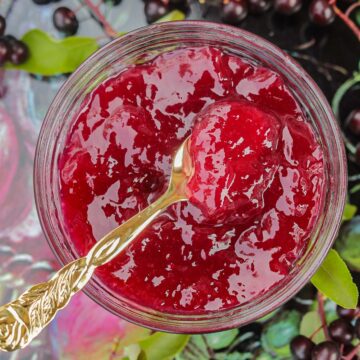
Backwoods Chokecherry Jelly
Equipment
- 6 8-ounce mason jars
- 1 8-quart pot
- 1 canner with tools
- 1 strainer
Ingredients
- 6 cups chokecherries
- 6 cups water
- 4½ tablespoon RealFruit Classic Pectin
- 2 tablespoon fresh lemon juice
- 1 teaspoon butter (optional)
- 4 cups sugar
Instructions
- Prepare a water bath canner, by completely covering six 8-ounce jars with water and boiling them for 10 minutes. Keep the jars in the hot water until needed. The lids can be added a few minutes before you need them.
- Add cleaned chokecherries to a six-quart Dutch oven. Cover with six cups of water. Bring to a boil and simmer, uncovered, for 30 minutes. Smash the fruit to release the juice and strain the liquid through a fine sieve. You should have approximately 3½ cups of juice. If not, add enough water to equal 3½ cups.
- Clean the Dutch oven and return to the stove. Pour strained chokecherry juice back into the pot. Turn the heat to medium. Whisk in RealFruit Classic Pectin until dissolved. Add lemon juice, and butter, if using. Bring the mixture to a full rolling boil, over high heat, whisking constantly.
- Next, add sugar, while you whisk quickly to dissolve it. Return mixture to a full rolling boil and boil hard for one additional minute, as you continue to whisk the mixture. Remove from heat and skim off the foam, if necessary. Ladle into sterilized jars, leaving ½" headspace. Wipe the glass jar rims with a damp cloth and hand-tighten the lids.
- Add jars to the canner filled with water and make sure the water level is at least a few inches over the jars. Process the filled jars in boiling water, for a minimum of 10 minutes, adding 5 additional minutes for every 1000'-3000' above sea level.
Notes
- It is generally recommended to let the juice drip into a bowl, undisturbed, for a few hours instead of squeezing or pressing on the fruit. This may cause the jelly to be cloudy. This is totally up to you and how much patience you have!
- Unripe chokecherries are red and are higher in pectin. This means they may help your jam jell better. Having a small percentage of unripe chokecherries as part of your recipe may not be a horrible idea.
- Chokecherries can be frozen until you are ready to use them. After washing the chokecherries and removing the earwigs, spiders, and other debris, measure and portion them into freezer bags. Freeze until needed.

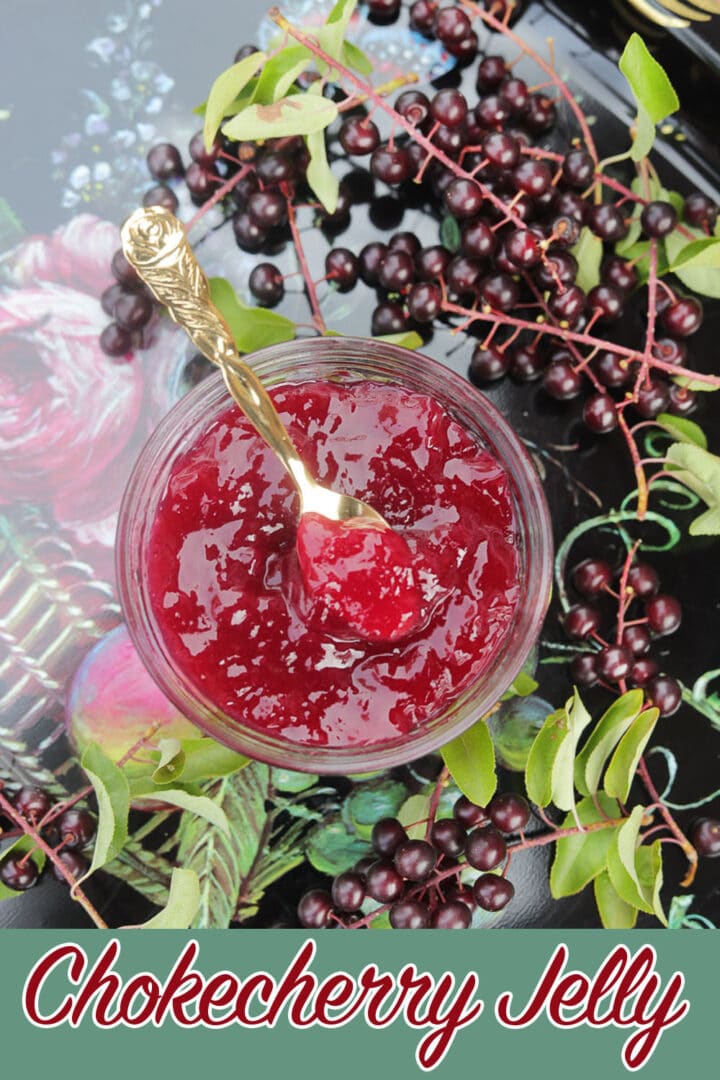
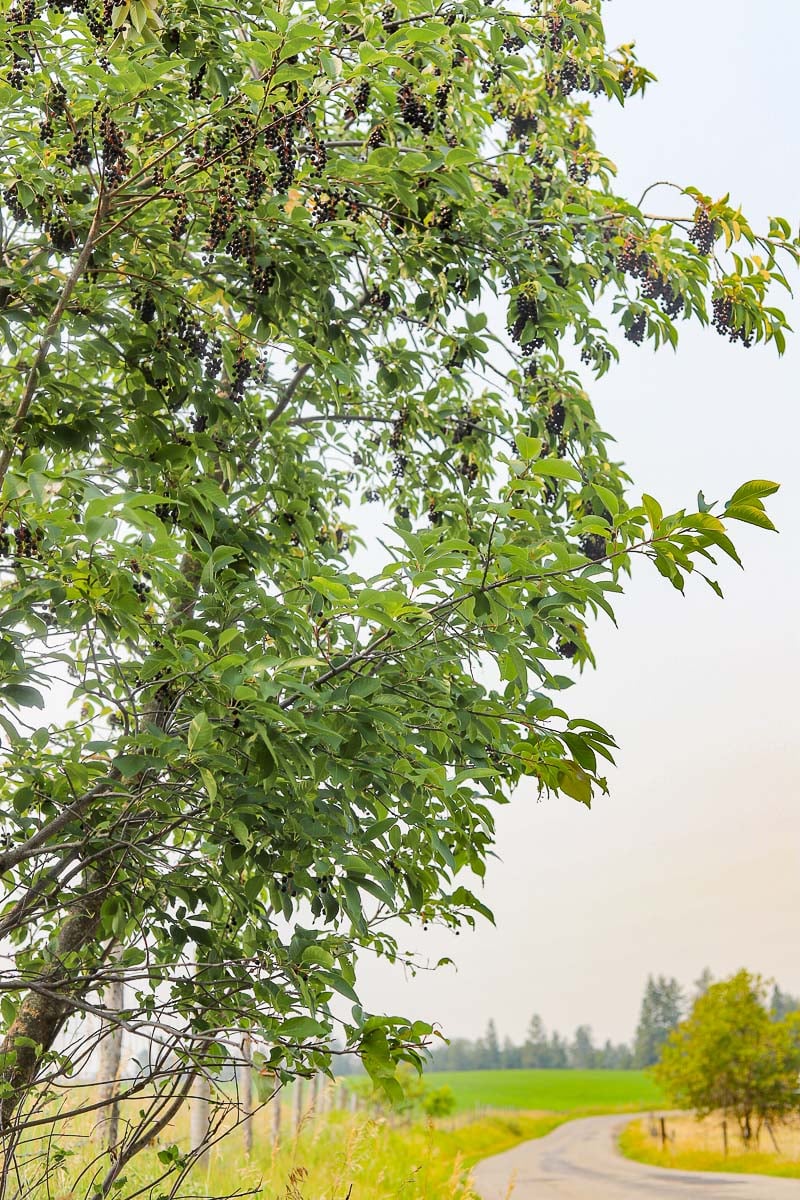
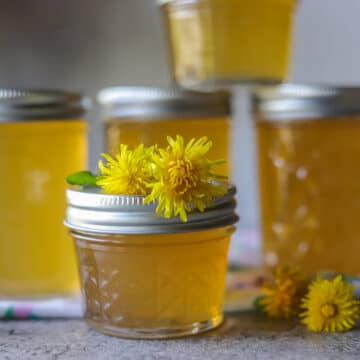
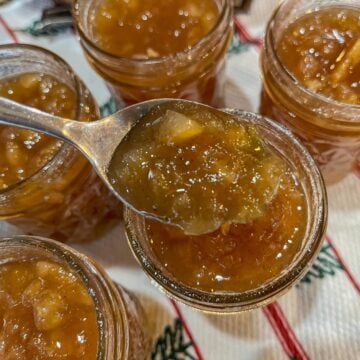
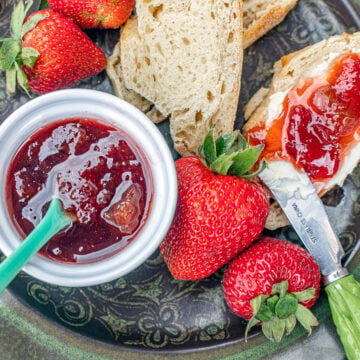
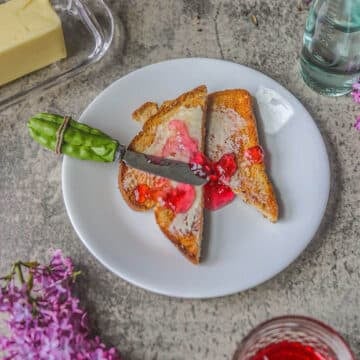
Sandy Spriggs says
Can this recipe be made like a freezer jam/jelly instead of canning it in jars? Have you had any luck making a freezer jam out of chokecherries?
Hilda Sterner says
Hi Sandy, I've never been a huge fan of freezer jam, so I've never tried adjusting the recipe for it. Sorry I can't be of more help!
Jean Brewer says
Hello, can you use a candy thermometer to 220 degrees and not use pectin. This is my first effort with chokecherry jelly.
Hilda Sterner says
Hi Jean, I've tried using a candy thermometer with other recipes and I've never had luck with it, but I supposed you can give it a shot. Good luck!
Linda Aragon says
Great receipt. Like my Grandma’s
Loved it. Linda
Hilda Sterner says
Aww, that's so great to hear! Thanks for letting me know!